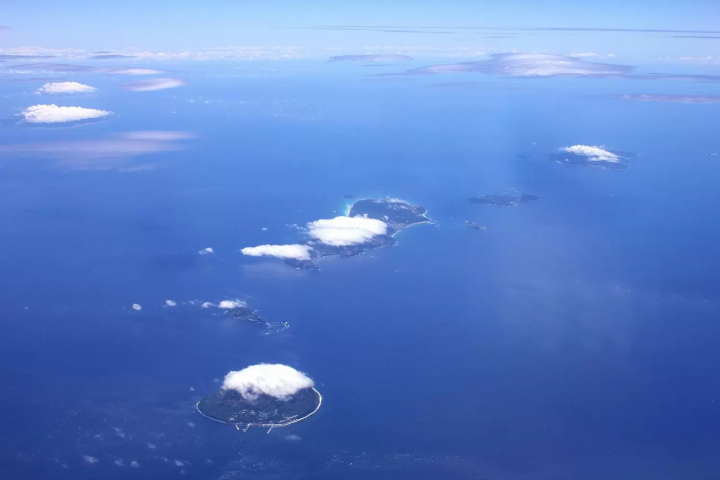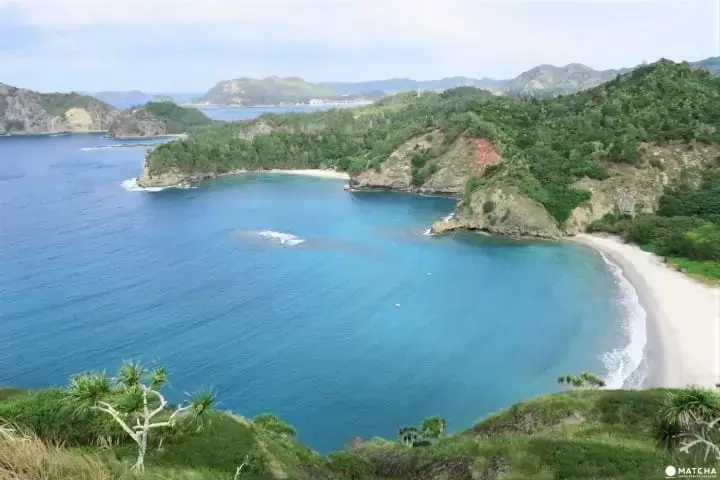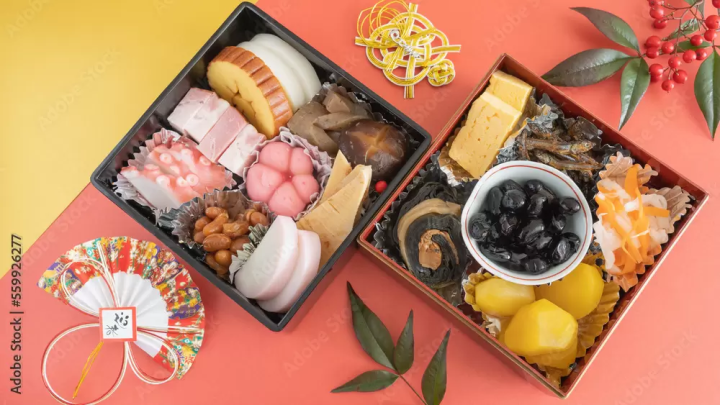Tokyo's Islands: Key Highlights, Access, and Best Times to Explore

Tokyo is home to beautiful islands collectively known as the Tokyo Islands. Although they are remote islands, some are easily accessible and are suitable for day trips. This guide highlights the attractions awaiting visitors at 11 inhabited islands and the best times to visit them.
Discover Tokyo's Islands
In addition to its vibrant urban areas, the Tokyo metropolis includes remote islands. While some of these islands are uninhabited, this article will highlight 11 inhabited islands in Tokyo that are popular travel destinations.
Tokyo's Islands, are characterized by beautiful nature and abundant marine resources. Some of them are home to superb hot spring resorts, others are popular destinations for snorkeling, stargazing, hiking, or dolphin watching. Despite being remote, some islands can be easily accessed from central Tokyo and are suitable for day trips.
The Tokyo Islands are divided into the Izu Islands and the Ogasawara Islands. Below, we highlight their features and how to access them
Tokyo Island Guide
Tokyo's Izu Islands
1. Oshima
2. Toshima
3. Shikinejima
4. Niijima
5. Kozushima
6. Miyakejima
7. Mikurajima
8. Hachijojima
9. Aogashima
Tokyo's Ogasawara Islands
10. Chichijima
11. Hahajima
Read also
Tokyo's Izu Islands

Aerial view of the Izu Islands. Photo by Pixta
The Izu Islands consist of 9 relatively large islands: Oshima, Toshima, Shikinejima, Niijima, Kozushima, Miyakejima, Mikurajima, Hachijojima, and Aogashima.
They are relatively close to central Tokyo and easily accessible, making them popular tourist destinations. In particular, Oshima and Niijima are known as hotspots for swimming and surfing.
Each island offers unique tourist attractions and local specialties that take advantage of their respective climates. There are plenty of appealing elements for tourists, including hot springs, gourmet food, and traditional crafts.
1. Oshima

Photo by Pixta
Oshima, which corresponds to Oshima Town in Tokyo, is often referred to as "Izu Oshima" to distinguish it from other islands with the same name.
Oshima is the largest of the Izu Islands and is easily accessible from central Tokyo. Mount Mihara, located on the island, is an active volcano that has erupted several times in the past. On its eastern side is a vast stretch of volcanic rock known as the Ura-Sabaku Desert, characterized by its black terrain.

Photo by Pixta
Oshima is also famous for its camellia flowers. One of the main tourist attractions is Tokyo Metropolitan Oshima Park, which features one of Japan's largest camellia gardens. Additionally, the Camellia Garden, where visitors can enjoy the contrast of red camellias and the blue of Mount Fuji in the distance, is another representative spot.
The best time to see the camellias is from winter to spring, attracting many tourists during this season.
Visitors can enjoy swimming and snorkeling in the beautiful ocean in summer, while autumn is ideal for hiking. In other words, Oshima can be enjoyed year-round.
Access from Tokyo Station

Photo by Pixta
To get to Oshima from Tokyo Station, take a train to JR Hamamatsucho Station. Then board a high-speed jet boat from the Takeshiba Passenger Ship Terminal, which takes about 1 hour and 45 minutes. There are also flights connecting Chofu City in the Tokyo suburbs to Oshima, with a travel time of just 25 minutes.
Due to its accessibility, day trips are also possible.
2. Toshima

Photo by Pixta
Toshima, corresponding to Toshima Village in Tokyo, is a small island in the Izu Islands famous for producing camellia oil. The island is covered with camellia trees, and the blossoms from winter to spring are breathtaking.
The island is surrounded by a beautiful sea, ideal for activities such as snorkeling, fishing, and dolphin swimming.
It would be best if you visited Toshima between winter and spring when the camellias are in full bloom.
Access from Tokyo Station
To get to Toshima from Tokyo Station, take a train to JR Hamamatsucho Station, then use a high-speed jet boat from the Takeshiba Passenger Ship Terminal. The travel time is approximately 2 hours and 25 minutes at the shortest.
3. Shikinejima

The Kanbiki Observation Deck on Shikinejima Island. Photo by Pixta
Shikinejima is one of the islands in Niijima Village, located to the southwest of Niijima.
Shikinejima is a relatively small island known for its beautiful beaches and hot springs.

Hot spring water on Shikinejima. Photo by Pixta
There are three outdoor baths where you can enjoy soaking in your swimsuit at any time: Jinata Onsen, Matsugashita Miyabi-yu, and Ashitsuki Onsen. These hot springs face the coast, allowing visitors to relax in a serene environment.
In the summer, many tourists flock to the island to go swimming and snorkeling. Visiting in autumn after the peak season is also recommended for a relaxing time enjoying the hot springs and fishing.
Access from Tokyo Station
To get to Shikinejima from Tokyo Station, take a train to JR Hamamatsucho Station, then use a high-speed jet boat from the Takeshiba Passenger Ship Terminal. The travel time is approximately 2 hours and 20 minutes at the shortest.
4. Niijima

Photo by Pixta
Niijima, corresponding to Niijima Village in Tokyo, is known as a surfing hotspot with beautiful white sandy beaches. In particular, Habushiura Beach is loved by many surfers.
The island is dotted with Moyai statues made from local Koga stone. Hunting for these statues while exploring the island is one of the joys of a visit.
The swimming season typically lasts until around September, but fishing and surfing can be enjoyed until about November.
Access from Tokyo Station
To get to Niijima from Tokyo Station, take a train to JR Hamamatsucho Station, then use a high-speed jet boat from the Takeshiba Passenger Ship Terminal. The travel time is approximately 2 hours and 20 minutes at the shortest.
5. Kozushima

The Senryo Pond on Kozushima. Photo by Pixta
Kozushima, corresponding to Kozushima Village in Tokyo, is an island known for its crystal-clear waters and rich nature. It is the most active fishing island in the Izu Islands, where you can enjoy local seafood like pink sea bream.
The scenic Takko Bay lies at the foot of the beautiful trapezoidal-shaped Mount Tenjo, located in the island's center. Both areas are renowned for their stunning views.
Snorkeling and diving are popular summer activities, while hiking is recommended in the autumn. Compared to Tokyo, the island is cooler in the summer and slightly warmer in the winter, making it a pleasant place to visit year-round.
Access from Tokyo Station
To get to Kozushima from Tokyo Station, take a train to JR Hamamatsucho Station, then use a high-speed jet boat from the Takeshiba Passenger Ship Terminal. The travel time is approximately 3 hours and 5 minutes at the shortest. There is also the option to fly via Chofu Airport.
Read also
6. Miyakejima

Izu Cape Lighthouse. Photo by Pixta
Miyakejima, corresponding to Miyake Village in Tokyo, is a volcanic island with a history of residents living alongside volcanic activity. The prominent Mount Oyama at the island's center has experienced violent eruptions approximately every 20 to 60 years.
Izu Cape, with no lights other than the lighthouse, is an excellent spot for stargazing. During the day, visitors can also enjoy birdwatching. The Izu Cape Lighthouse, built in 1909, is a tall, pure white tower that offers a beautiful contrast with the blue sky and ocean, making it a great photo spot.

The century-old Lost Chinquapin Tree on Miyakejima. Photo by Pixta
The stunning scenery extends beyond Izu Cape. The island is designated a national park and is home to around 250 bird species.
The best times to visit are during the spring and autumn.
Access from Tokyo Station
To get to Miyakejima from Tokyo Station, take a train to JR Hamamatsucho Station, then use a night ferry from the Takeshiba Passenger Ship Terminal. The travel time is approximately 6 hours and 30 minutes at the shortest.
If you want to arrive quickly, you can also fly out of Chofu Airport.
7. Mikurajima

Photo by Pixta
Mikurajima, corresponding to Mikurajima Village in Tokyo, is a small island famous for dolphin watching. Visitors can also enjoy dolphin swims alongside wild bottlenose dolphins.
The island is rich in nature, allowing for enjoyable hiking and birdwatching.
Dolphin activity is particularly lively during the summer, so visiting during this season is recommended if you want to swim with them.
Access from Tokyo Station
To get to Mikurajima from Tokyo Station, take a train to JR Hamamatsucho Station, then board a night ferry from the Takeshiba Passenger Ship Terminal. The travel time is approximately 7 hours and 25 minutes at the shortest.
If you want to get there more quickly, you can also fly via Chofu Airport and transfer to a helicopter in Miyakejima.
8. Hachijojima

Photo by Pixta
Hachijojima, corresponding to Hachijo Town in Tokyo, features Mount Mihara and Hachijo-Fuji, making it an island known for its hot springs and abundant nature.

Uramigataki Falls on Hachijojima. Photo by Pixta
Once referred to as Japan's Hawaii, it is a place where you can enjoy a relaxing time filled with tropical charm.
Sokodo Beach is the only artificial sandy beach on the island, attracting many beachgoers yearly.

Uramigataki Onsen. Photo by Pixta
The island has seven hot spring facilities, offering various places to unwind. This includes outdoor baths where you can wear swimsuits, an indoor bath made of cypress that embodies Japanese aesthetics, and foot baths with ocean views.
Each season offers unique experiences. However, it is recommended to visit in autumn or winter if you want to enjoy soaking in the hot springs.
Access from Tokyo Station
To get to Hachijojima from Tokyo Station, take a train or limousine bus to Haneda Airport, then fly to Hachijojima Airport. The travel time is about 55 minutes.
There are alternative routes and options to transfer via helicopter so you can choose your transportation method based on your travel itinerary.
9. Aogashima

The double caldera on Aogashima. Photo by Pixta
Aogashima corresponds to Aogashima Village, the least populated municipality in Tokyo and located at the southernmost point among the inhabited islands of the Izu Islands.
Aogashima is an isolated island with unique topography and is captivating due to its remoteness.
One of its most distinctive features is the double caldera. The clearly defined inner and outer mountain ranges create a double caldera, which is a rare geological formation worldwide. The island is also known for its salt produced from the geothermal heat of the "hingya" steam vents, and its natural saunas are particularly attractive.

Observation Deck on Aogashima. Photo by Pixta
Despite being distant from other islands in the Izu group, Aogashima attracts many visitors yearly.
You can enjoy the island year-round, but it is highly recommended that you travel in spring or autumn when the climate is especially pleasant.
Access from Tokyo Station
There is no direct route to Aogashima from the mainland, so you must travel via Hachijojima.
To get to Hachijojima from Tokyo Station, take a train or a limousine bus to Haneda Airport, then fly to Hachijojima Airport. The travel time is about 55 minutes.
Afterward, it would be best if you took a ferry or helicopter from Hachijojima to Aogashima.
Tokyo's Ogasawara Islands

Chichijima Island. Photo by Pixta
The Ogasawara Islands mainly consist of two islands: Chichijima and Hahajima. Located about 1,000 km from central Tokyo, they do not have airports due to environmental protection. Visitors can only access the islands by boat.
Many areas of untouched nature remain, making activities like diving and hiking especially popular.
Known as the "Galapagos of the East," the islands maintain a unique ecosystem with many endemic species. This is why they are registered as a UNESCO World Heritage site and are a favored destination for nature lovers.
10. Chichijima

Chichijima is a remote island in the Ogasawara archipelago, about a thousand kilometers south of Tokyo. The journey to Chichijima by ferry from the city takes an entire day.
The island's mountainous landscape, shaped by volcanic activity beneath the ocean, offers breathtaking views from its elevated points. From the Nakayama Mountain Pass, you can enjoy a panoramic view of the island, stretching from the sandy shores of Kominato Beach to the north, across the coral reefs of Kopepe Beach, and down to Port Futami, where the Ogasawaramaru ferry departs.
One of the things that Chichijima is renowned for is its history as a military base used during the Second World War. If you walk around the island, you can still see relics of structures that were used in the war.
Access from Tokyo

Chichijima can be accessed by the large ferry called Ogasawara-maru, which departs from Tokyo's Takeshiba Passenger Ship Terminal.
Advance reservations are required to board the Ogasawara-maru. You can make a reservation online through the official website of Ogasawara Marine Transportations, by phone, at the ticket counter, or through a travel agency.
The ferry ride to Chichijima lasts about 24 hours. Ogasawara-maru has comfortable sleeping rooms, cafeterias, and observation decks that make the trip very enjoyable.
Read also
11. Hahajima

Photo by Pixta
Hahajima Island is situated approximately 50 kilometers south of Chichijima Island, which serves as the gateway to the archipelago. This inhabited island covers an area of 20 square kilometers and extends in a north-south direction, home to around 500 residents.
Hahajima Island has a history as a whaling hub and served as a military site during World War II. After the war, the island residents dedicated themselves to protecting and restoring the island's natural environments, successfully earning recognition as a Natural Heritage site in 2011.

The view from Mt. Kofuji. Photo by Pixta
The southern area of Hahajima Island is home to Mt. Kofuji ("Little Fuji"), which offers trekking routes with breathtaking views of the island and the ocean. Reaching the summit takes about 40 minutes, requiring a climb up steep stairs and ladders. If you plan to hike, it's advisable to wear sturdy footwear appropriate for hiking.
Access from Tokyo
To reach Hahajima Island, you must first embark on a 24-hour journey to Chichijima Island by the Ogasawara-maru from Tokyo's Takeshima Passenger Ship Terminal. Upon arrival at Futami Port on Chichijima, you will transfer to the Hahajimamaru, which will take you on a two-hour ride to Hahajima Island.
The Hahajimamaru operates three to four times a week, coordinating its departures with the Ogasawaramaru. Departure schedules for the Hahajimamaru can be found on the Ogasawara ferry website.
Hahajimamaru is also called the Whale Liner and during your journey across the sea, you may be able to spot whales from the boat.
Read also
Discover the Inhabited and Accessible Islands of Tokyo: A Must-Visit Adventure!
The Tokyo Islands introduced in this article are easily accessible from central Tokyo, and some are even perfect for a day trip. However, since transportation options are limited, it is important to check the method of transportation in advance and plan your trip accordingly.
As inhabited islands with communities, they have public roads and buses. Hotels, inns, restaurants, and sightseeing spots are also available.
Why not consider visiting these attractive tourist destinations where you can enjoy rich nature and unique culture at least once?
Read also
Written by Cakutama editorial team
This is the official account of MATCHA's editorial department. Our articles feature useful travel information for visitors to Japan, from how-to guides to recommended places to visit.






![[2025 Latest] A complete guide to enjoying a hidden gem in Japan: Tokyo and Kozushima in 4 nights and 5 days](https://resources.matcha-jp.com/resize/200x2000/2024/09/28-199498.webp)





































![[Corporate Visit List] Near Kansai Airport! Discover Japan’s Technology and Business Philosophy through Industrial Tourism](https://resources.matcha-jp.com/resize/720x2000/2024/12/13-215168.webp)
![["Secret Beauty: The Complete Works of Komura Setsutei" ~ March 1, 2026] "Abeno Harukas Art Museum"](https://resources.matcha-jp.com/resize/720x2000/2026/01/09-255274.webp)


